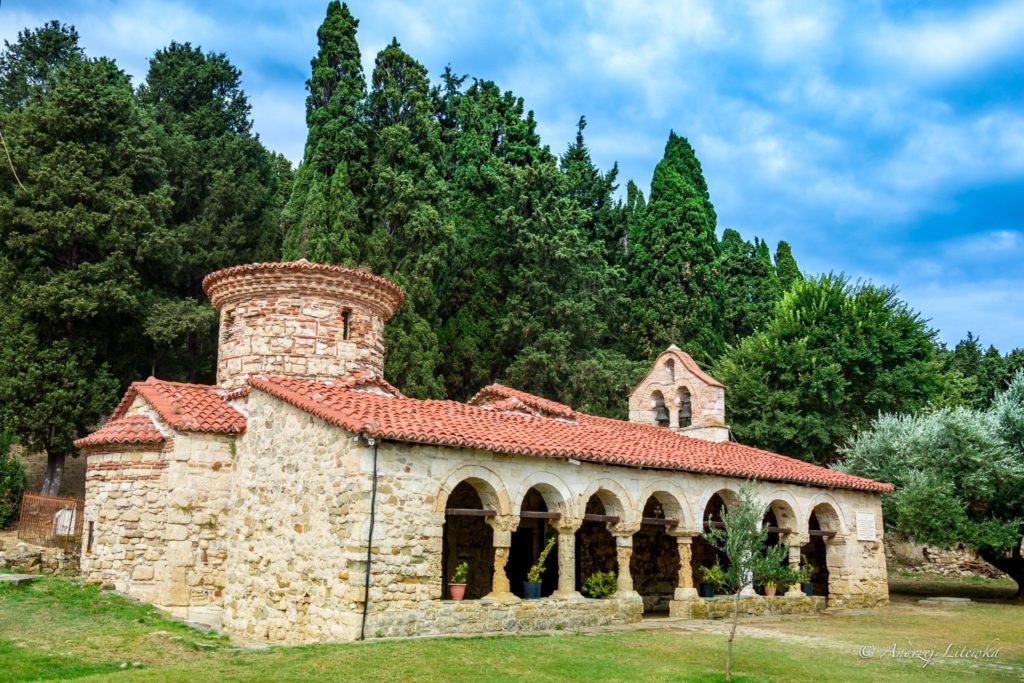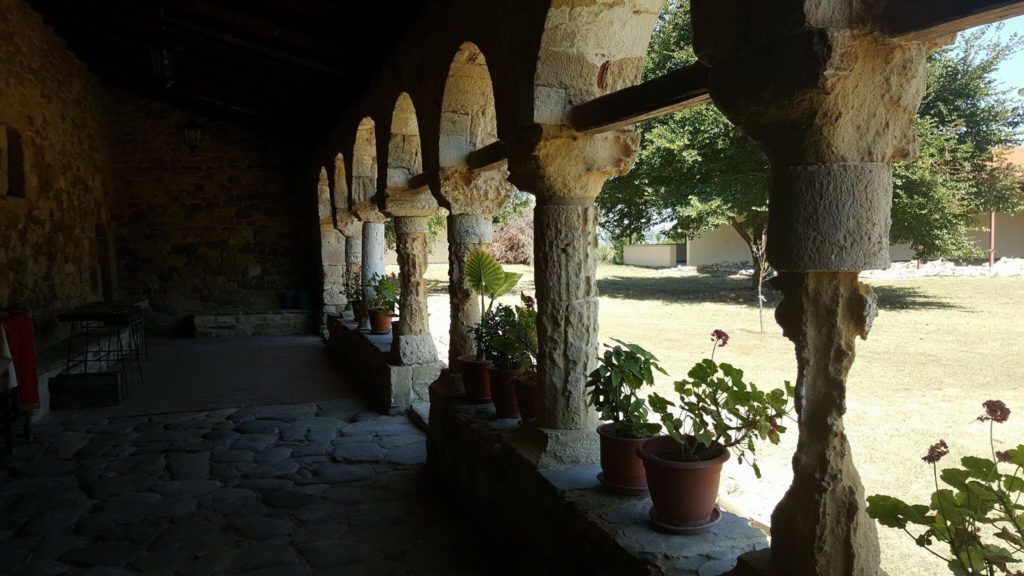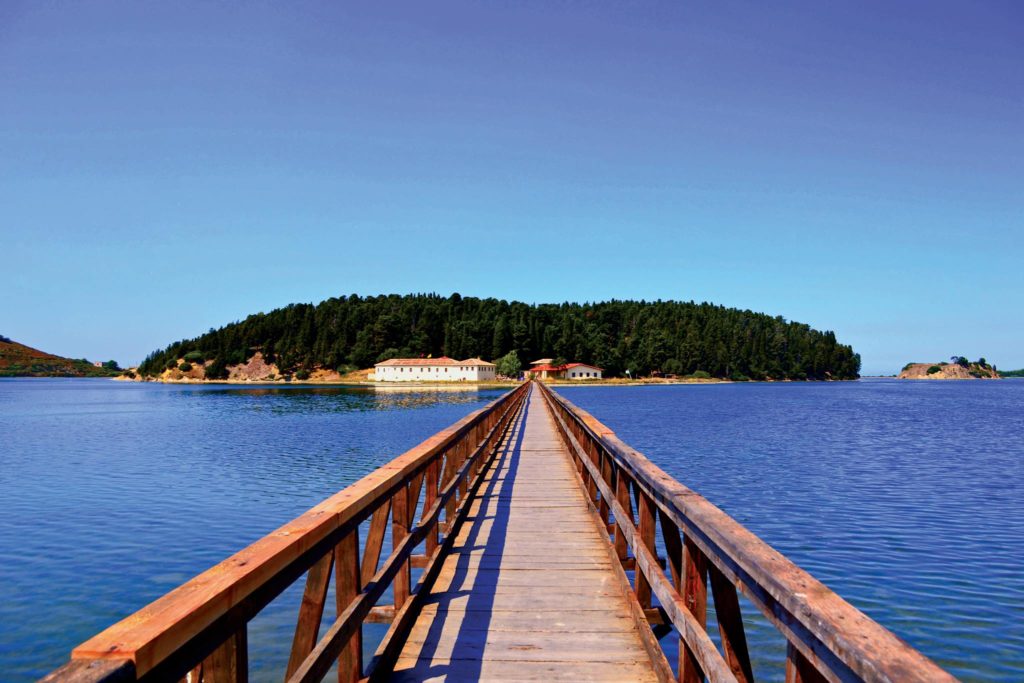ZVËRNEC MONASTERY and stories about it
February 17, 2020 || views
By Ilirjan Gjika
Located on the island of Zvërnec, the church of St. Mary resembles an old ship navigating alone in the Narta lagoon. By looking closely it looks like the time has remained in this country for a long time. Neither the pangs of nearby forest leaves nor the sound of the waves do not spoil its centuries-old tranquility. Only the “” bells have this privilege. Occasionally, their tones warning the religious holidays or the days marked seem to remind us of past events and people who lie in the nearby cemetery.
The Monastery of St. Mary of Zvërnec is one of the most famous Byzantine monasteries in the Vlora region. It is located in a place shifted to a Northeast lagoon. The distance from the residential centers, the isolation and the protected place made this location suitable for setting up such an object. Even the founder of the monastic life, Pakomi, in such places began the activity of monkism once in Egypt of the fourth century. Detained in monasteries there lived monks, people who fled everyday life and sought solitude for peace and tranquility. Their job was to pray to the Lord together and spend the rest of the time devoting you to crafts, writing books, or other human activities.
The packet also defined the first rules of this service, such as the oath, belief, and obedience to the commander, which were associated with the creation of the first monasteries, which were special institutions operating within the church. But the “life of monks” officially began at the end of the 5th century, when the Italian monk, Benedetto of Norchi, formulated the “Rule of the Master”, which regulated the activity of monastic life. Just under the rule of Emperor Justinian (527-565) monasticism and the rise of the monasteries took a wide spread (Pierre Milza, History of Italy, US Dituria, Tirana 2012, 158). Some time around the 6th century, this tradition began to be applied in our country, creating a wide network of monasteries where only in the Vlora region, where today are preserved such churches of Zvërnec, Marmiro and Himara coast.
According to the scholar Alexander Meksi, the church of St. Mary of the Zvërnec Monastery, is of the “free cross” type with dome. It carries two stages of construction, separating it in the old and the new. The old one consists of ours (halls) and narthex (parasalla). Naosi has the shape of a free cross and consists of aces, a semicircular and diaconic protezis. Much of it is covered with a cupola drum, which is made of stones and bricks made of mortar between them. While the narthex is the rest of the old building that is represented by a quadrilateral extension. Nearby is the newest part of this church that consists of exonarty (portico) and bell. Ekinearth is built with the same technique as the old part of the church and is added later. Its facade consists of seven arches supported by six columns, which are influenced by Roman Byzantine architecture. In the western part of the church is the campus, which can be of the same time as exonartic building (Alexander Meksi, Medieval Architecture in Albania, Tirana 1983, pp. 128-129). There are some thoughts about determining the construction time of this Christian pagoda. Alexander Meksi argues that the church belongs to the 13th-14th centuries. While Austrian scholars, Helmut and Herta Bushhausen, think that its construction dates back to the Xth century (Bushhausen, 1976). Another scholar, Krauthemeri, thinks that this type has taken the architectural style from the Roman mausoleums and is built away from urban centers between the X-XI centuries. This idea seems interesting because strangely within the church on Naos is on its floor a tile slab, for which the scholar Theofan Popa, alludes to one of the noble Karanxha family members.
A hypothesis thrown by Popa is based on the writings of the famous Byzantine historian Ana Komnenës. In her writings is also the name of Argiros Karanxhas, who was commander of the Byzantine imperial guard. He was sent in 1091 by Emperor Alex Komneni with a mission in Durrës, equipped with two letters. One of them was for Duke of Durrës, Joan Komnen, while the other was for the parish of this city. Argjiro Karanxha left for this city with a dual purpose. Initially, he would hand over the first letter that asked Joan to go to Constantinople to give explanations after suspected conspiracy activity. Argjiro’s main purpose was to persuade him to head to the capital as he himself took over the direction of Durres. While the second letter the Emperor had charged with Karanxhas was too secretive. He would use it if it proved that Duke Joan was really a conspiracy. Then Argjiroi would open this letter in the presence of the Durrës Party to arrest Duka Joan, who was also the grandson of the emperor. But in this mission, only the first letter was used. Joan Komneni convinces the emperor’s will and departed to his location in Filipol, Bulgaria. Here Emperor Aleks waited and after being convinced that the accusations spread to his grandson were false, he started back to Durrës where he “called for office”. (Byzantine Byzantine Sources for Albania’s History, X-XV Century, Tirana, 1975, p. 107). This testimony gives us in her book Aleksiada Byzantine historian Ana Komnena on the mission of Commander Argjiro Karanxha in 1091 (Alexias Vol II Lib VIII, pp. 19-23). Argjiro must have stayed in Durres for a short period of almost two months. His destiny is far from knowing what’s going on. Perhaps the tomb within the church of St. Mary in the Zvornice monastery belongs to him. However, such a hypothesis was thrown out by the scholar Theofan Popa in his book: “Inscriptions of the churches of Albania”. According to him, it is a limestone The inscription is placed on a flat field while the tiles are decorated by the imitation of two Corinthian columns, above which stands a bow. The inscription consists of three lines and contains the following text: “Here lies Kondos Karanxhas, a nobleman from a noble tribe, a noble branch” (Theofan Popa, Inscriptions of the Churches of Albania, Tirana 1998, 145-146). Below the inscription the hand of a sculptor has carved with a lot of art a skull of man, surrounded by a snake crowned with two symbol bones which has not been explained so far.
But the stories about this monastery do not end there. In his book “The Castle of Kanin and other writings,” a modern author such as Eqrem Bey Vlora, quotes a Norman anonymous chronicle titled “Breve Chronica Normanna”. According to her during the Norman campaign of 1081, the prominent prominent Western horseman, Tarem’s Boemundi, after occupying Vlora, also besieged the castle of Kanin. Unable to take war, his people used another tactic. They persuaded the Byzantine Commander’s wife for a good reward to kill her husband and open the gates of the fort. The traitorous woman acted according to the order and was rewarded for the work done. But when in Vlore arrived from South Italy, Robert Guiskardi, Boemundi’s father, took another turn. After listening to this event, the prominent Norman cavalry was revolted by this low act and order to imprison the woman in the Zvërnec Monastery (Eqerem Bey Vlora, Kanin Castle and other Shkrimet, Koçi, 2004).


